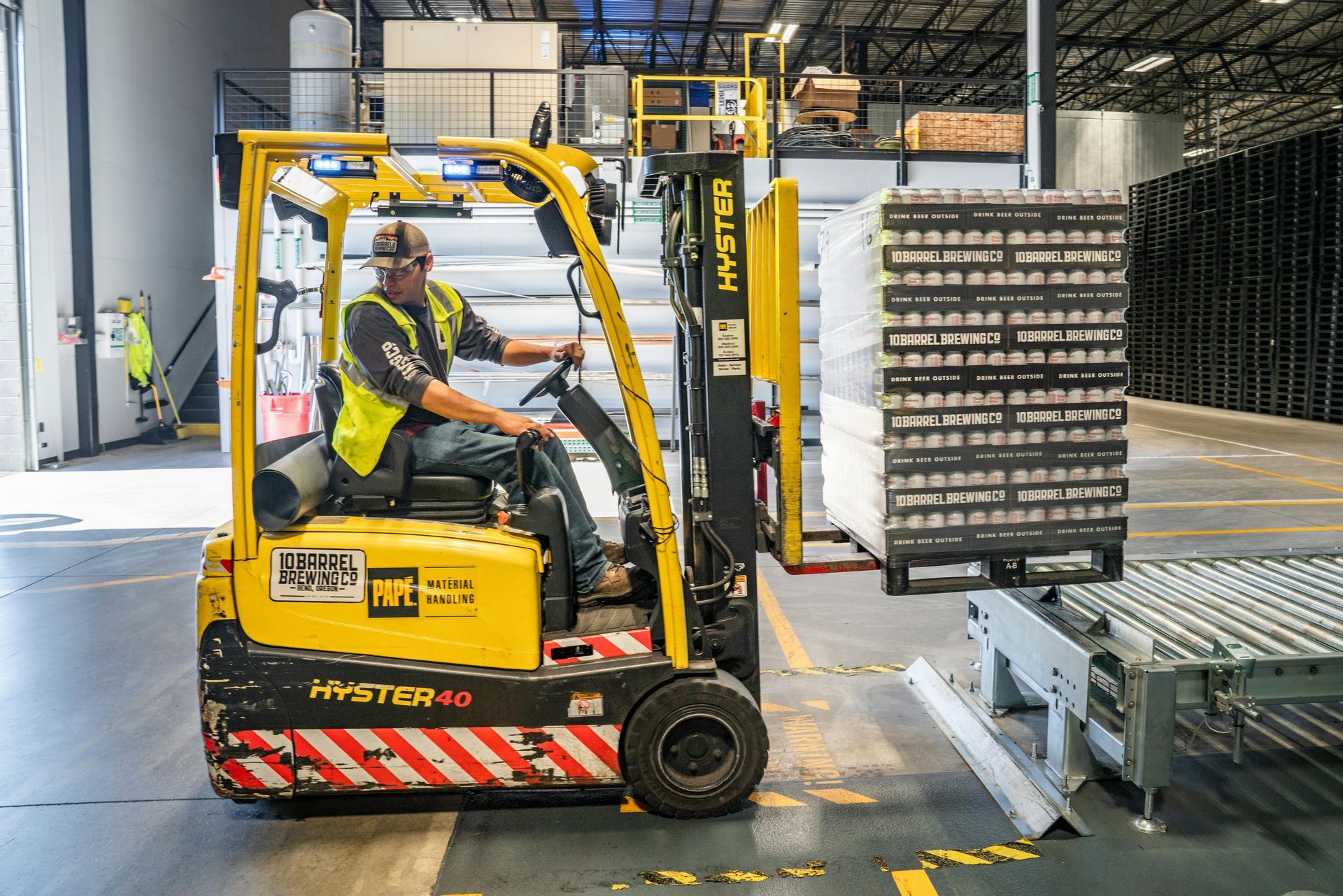A Guide to Summer Warehouse Safety
When summer temperatures rise, warehouse work becomes even more demanding.
For logistics teams in the Midwest, the heat brings more than just discomfort—it can also create dangerous conditions if the proper precautions aren't taken. From high humidity to sudden storms, Midwest summers present unique challenges for warehouse safety.
In this blog, we'll discuss the common risks of working in a warehouse during the summer and offer practical strategies for keeping your team safe, productive, and prepared.
The Hidden Dangers of Summer in a Warehouse
Unlike office environments, warehouses don't always benefit from complete climate control.
Add in the fast pace of logistics work—loading, unloading, operating forklifts—and heat-related risks increase quickly.
The following are some key hazards to keep a close watch on.
Heat Stress & Dehydration
When temperatures rise, so does the risk of heat exhaustion and heat stroke. Workers in physically demanding roles may not notice they're overheating until it's too late.
Slippery Surfaces from Condensation
Humidity can create slick surfaces near loading docks, cold storage areas, or where hot air meets cold machinery. If not monitored, these slippery zones can be fall hazards.
Electrical Risks
High temperatures can overheat electrical equipment. On top of that, sudden Midwest thunderstorms can cause surges or outages that put equipment and worker safety at risk.
Fatigue-Related Accidents
Heat drains energy. In the heat, workers are more likely to make mistakes, lose focus, or move more slowly, increasing the risk of accidents.

Key Safety Strategies for a Safer Summer
Climate Control & Ventilation
Good airflow can make a significant difference in reducing heat stress. Open bay doors when safe, and use large industrial fans or portable AC units to keep air moving.
Consider spot cooling stations where employees can take short breaks to cool down.
Hydration & Rest Breaks
Set up cold water and electrolyte drink stations throughout the warehouse.
Encourage workers to take short hydration breaks regularly, especially during the hottest hours of the day (usually between 12 and 4 PM). Remind supervisors to check in with workers and enforce rest periods.
Proper PPE for Hot Weather
Personal protective equipment (PPE) can contribute to overheating if not adapted for the season.
Offer lightweight, breathable uniforms and moisture-wicking gloves.
For outdoor workers, provide wide-brim hats and cooling towels.
Storm Safety & Emergency Preparedness
Midwest summers are known for quick, intense thunderstorms and even tornadoes.
Ensure all employees understand the facility's emergency weather protocols, including where to shelter during a storm.
You can also secure outdoor inventory and ensure surge protectors and emergency lighting systems work correctly.
Training & Communication
Preparing for summer hazards starts with education.
Train workers to recognize the signs of heat stress, including dizziness, confusion, rapid heartbeat, and excessive sweating. Make sure everyone knows how to respond if a coworker is showing symptoms.
Use signage around the warehouse to reinforce safety reminders: "Stay Hydrated," "Report Slippery Surfaces," or "Cool Down Before You Heat Up." Create a communication plan for severe weather alerts so your team knows how to respond quickly and safely.

Equipment & Maintenance Checks
Hot weather can affect the performance and lifespan of your warehouse equipment.
Schedule regular inspections for forklifts, conveyors, and HVAC units. Check for overheating, low fluid levels, and any signs of wear caused by heat.
Pay close attention to floor safety, especially in high-traffic areas. Condensation can cause puddles and slick spots, so cleaning crews frequently monitor and dry these areas.
Encouraging a Culture of Safety
Your team is more likely to stay safe if they feel empowered to speak up.
Encourage a buddy system during high-risk tasks so workers can watch out for each other. Let employees know it's okay to pause if they feel dizzy, dehydrated, or overheated.
Recognize teams or individuals who follow safety protocols. Something as simple as a shoutout in a morning meeting or a small reward can reinforce the importance of safe behavior.
Work With Gustine Logistics
Keeping your logistics operation running smoothly during the summer means prioritizing worker safety.
Remember, the cost of a heat-related injury or accident far outweighs the time and resources needed to plan.
Start the conversation today. Review your summer safety protocols, inspect your equipment, and check in with your team. Safety doesn't happen by accident—it happens by design.
Midwest logistics companies can position themselves for long-term success in 2025 and beyond by focusing on innovation, sustainability, and strategic planning. Ready to take the next step?
Contact our team to learn how we can help optimize your logistics operations for the road ahead.


